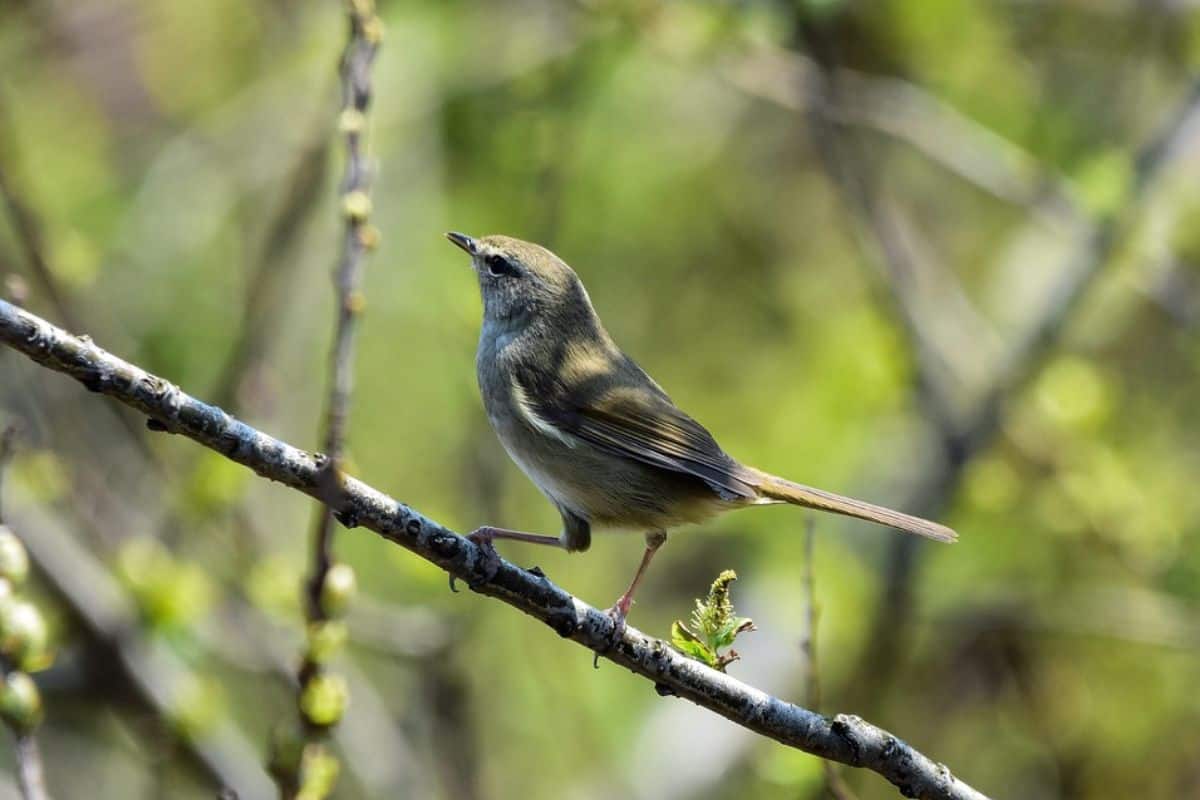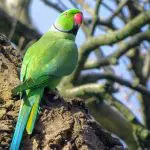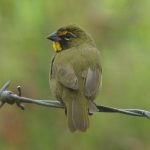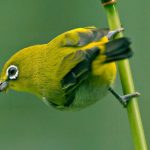Common Name: Japanese Bush Warbler
Scientific Name: (Horornis diphone)| Size | Diet | Range in Hawaii | Status in Hawaii |
|---|---|---|---|
| 5 in. - 6 in. | insects and other small invertebrates | Common on all Islands | Least Concern |
The Japanese bush warbler (Horornis diphone), known as uguisu in Japan, is a fascinating and unique bird species that is native to Japan and other parts of Asia. With its distinctive green and brown plumage and beautiful singing, this warbler is a beloved sight in its natural habitat.
However, the species has also established itself as a naturalized (non-native) resident in Hawaii, where it has been present for over a century. In this article, we’ll explore the fascinating world of the Japanese bush warbler, its unique adaptations, and its behavior in the wild.
Japanese Bush Warbler
Appearance
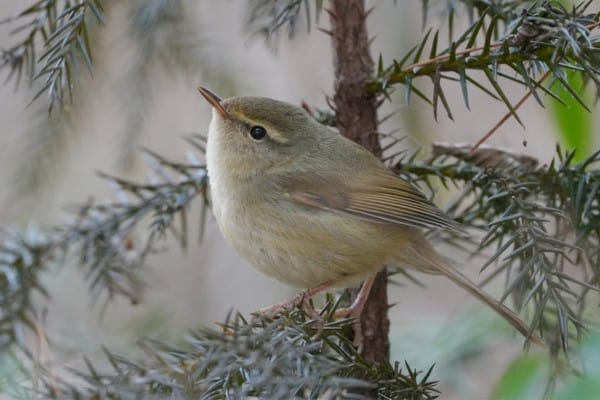
The Japanese Bush Warbler is a small bird with a distinctive appearance. It measures approximately 13-15 centimeters (5-6 inches) in length and has a wingspan of about 18-20 centimeters (7-8 inches).
The bird’s plumage is predominantly olive-green, which helps it blend seamlessly into its forested habitats. Its throat is pale yellow or whitish, creating a subtle contrast against the green plumage. The Japanese Bush Warbler has a relatively long tail and wings, giving it an agile and slender appearance.
While its overall coloration may seem plain, its subtle beauty lies in its intricate patterns and natural camouflage. Its features, including a narrow eye-ring and slightly curved bill, add to its charming appearance. Due to its small size and well-camouflaged feathers, the Japanese Bush Warbler can be challenging to spot despite its distinct song.
Diet
The Japanese Bush Warbler has a primarily insectivorous diet, meaning it mainly feeds on insects and other small invertebrates. It forages in dense vegetation, shrubs, and forest understory, where it searches for prey among leaves, branches, and ground litter.
The bird’s diet includes a variety of insects such as beetles, spiders, caterpillars, ants, and other arthropods. It may also consume small snails and worms when available. The Japanese Bush Warbler employs its agile and slender bill to probe and capture its prey.
Nesting
The Japanese Bush Warbler follows a relatively simple nesting process. The female is responsible for constructing the nest, which is typically a cup-shaped structure made of plant materials such as twigs, grass, leaves, and moss. The nest is often well-camouflaged and hidden within dense vegetation or shrubs.
The female selects a suitable location for the nest, generally close to the ground or low in shrubs, where it offers protection and concealment. The nest-building process usually takes several days to complete, with the female intricately arranging the materials to form a sturdy and comfortable nest.
Once the nest is constructed, the female lays a clutch of eggs, typically consisting of 3-5 eggs. The eggs are small and speckled with various shades of brown, providing camouflage and further protection from potential predators. The female incubates the eggs for about 12-14 days, keeping them warm and ensuring their proper development.
Both parents share the responsibilities of caring for the nest and feeding the hatchlings once they emerge. They bring a variety of small insects and invertebrates to the nest to feed the hungry chicks. The feeding process continues for a few weeks until the young birds become independent and are ready to leave the nest.
The Japanese Bush Warbler’s nesting period aligns with the spring and early summer months when food availability is relatively abundant. The nest serves as a safe haven for the vulnerable chicks, providing shelter from the elements and potential threats.
Behavior
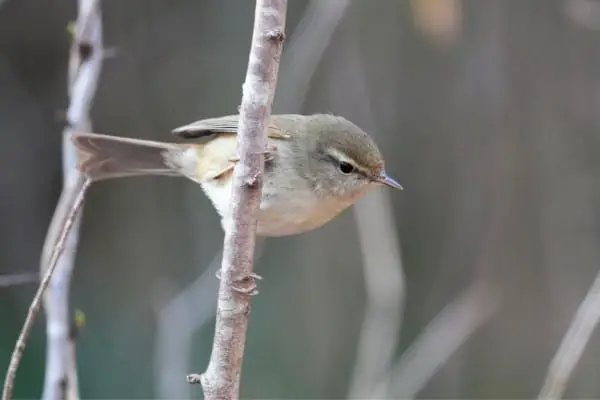
The Japanese Bush Warbler exhibits fascinating behavior influenced by its natural habitat and unique characteristics. This elusive bird is known for its melodious song, which serves as a symbol of spring in Japan. Despite its captivating vocalizations, the Japanese Bush Warbler is shy and tends to remain hidden within dense vegetation.
It has excellent camouflage and prefers thick shrubs and forest understory, allowing it to blend seamlessly into its surroundings. Males are territorial and vigorously defend their territories using their songs. Aggressive interactions, such as chasing and vocal displays, may occur between neighboring males.
As an active forager, the Japanese Bush Warbler primarily feeds on insects and small invertebrates. It hops and climbs through vegetation, searching for prey among leaves, branches, and ground litter.
Its agile bill allows it to probe and capture insects with precision. Nesting behavior involves the construction of cup-shaped nests by females, often in concealed locations within shrubs or close to the ground. Both parents share the responsibilities of incubating the eggs and caring for the hatchlings, providing them with a varied diet of insects.
While most populations are non-migratory, some northern populations undertake short-distance movements in response to seasonal changes. The Japanese Bush Warbler holds cultural significance in Japan and is celebrated during spring festivals. Its image is often featured in traditional art and crafts.
Habitat
The Japanese Bush Warbler is primarily found in Japan and surrounding islands, where it occupies diverse habitats. It has a preference for areas with dense vegetation, including forests, woodlands, shrublands, and thickets. Within these habitats, it is commonly found in the understory, where it can hide and blend in with its surroundings.
The bird thrives in habitats with a variety of plant species, as this provides ample cover and a rich food supply. It is particularly associated with areas that have a mix of trees, shrubs, and undergrowth. These habitats offer suitable nesting sites and an abundance of insects and small invertebrates for the Japanese Bush Warbler to feed on.
In addition to its native range in Japan, the Japanese Bush Warbler has also been introduced to the Southeastern Hawaiian Islands, where it has successfully established populations. It can be found in a range of habitats in Hawaii, including forests, woodlands, and shrubby areas.
Range
The Japanese Bush Warbler has established populations on multiple islands in Hawaii, including O’ahu, Molokai, Lana’i, Maui, Kaua’i, Kaho’olawe, and Hawai’i Island. They were introduced to O’ahu between 1929 and 1941 and quickly spread throughout the island.
On Molokai, they are commonly found in the Pelekunu Valley and have expanded their range to the Olokui Plateau. Lana’i has a moderate population of Japanese Bush Warblers in upland areas, while Maui has seen an expansion of their range to various locations.
Kaua’i has an increasing population, especially in central portions and the Alakai Swamp. Kaho’olawe maintains a small breeding population, and Hawai’i Island has seen the birds spread to various locations, including Hakalau NWR and the Kohala Mountains.
Conservation Status
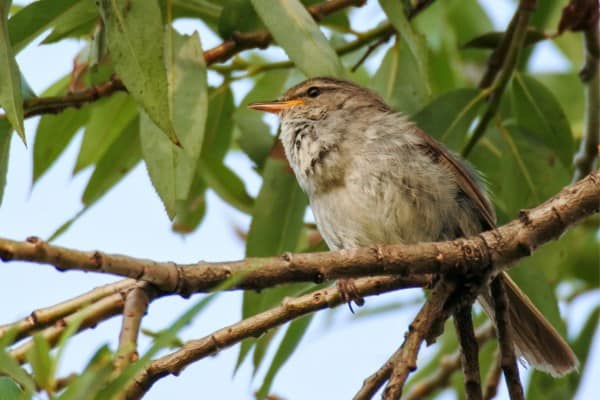
The conservation status of the Japanese Bush Warbler is currently assessed as Least Concern by the International Union for Conservation of Nature (IUCN). This indicates that the species is not facing significant threats or experiencing a rapid decline in population.
The Japanese Bush Warbler has a relatively wide distribution across its native range in Japan and surrounding islands. While there have been concerns about their introduction and potential impact on native species in the Southeastern Hawaiian Islands, their populations in Hawaii have generally remained stable.
Interesting Facts
1. Vocal abilities
The bird is renowned for its melodious and distinct song, which is considered a symbol of spring in Japan. It has a wide repertoire of vocalizations, including a complex and rhythmic song with a variety of phrases.
2. Endemic to Japan
The Japanese Bush Warbler is native to Japan and its surrounding islands. It is well-adapted to the country’s diverse habitats, including forests, woodlands, and shrublands.
3. Introduction to Hawaii
The Japanese Bush Warbler was introduced to the Southeastern Hawaiian Islands, primarily on O’ahu, between 1929 and 1941. It was released for insect control and aesthetic purposes.
4. Symbol of Japan
It is prominently featured in poetry and literature as a symbol of the rejuvenation of spring, bringing hope and marking the end of harsh winter times. Referred to as the “spring bird” and “poem reading bird,” it is associated with the plum blossom, representing the arrival of spring.
Frequently Asked Questions
1. Can the Japanese Bush Warbler mimic other bird songs?
While the Japanese Bush Warbler has a complex and melodious song of its own, it does not have a strong reputation for mimicking other bird species’ songs.
2. Can I keep a Japanese Bush Warbler as a pet?
It is not recommended to keep Japanese Bush Warblers as pets. They are wild birds that require specific habitats and environments to thrive. It is best to appreciate and observe them in their natural habitats.
3. How long do Japanese Bush Warblers live?
The lifespan of Japanese Bush Warblers in the wild can vary, but they typically live for around 3-5 years. However, some individuals have been known to live longer under favorable conditions.
